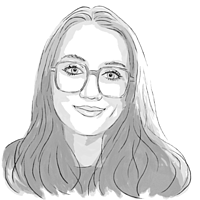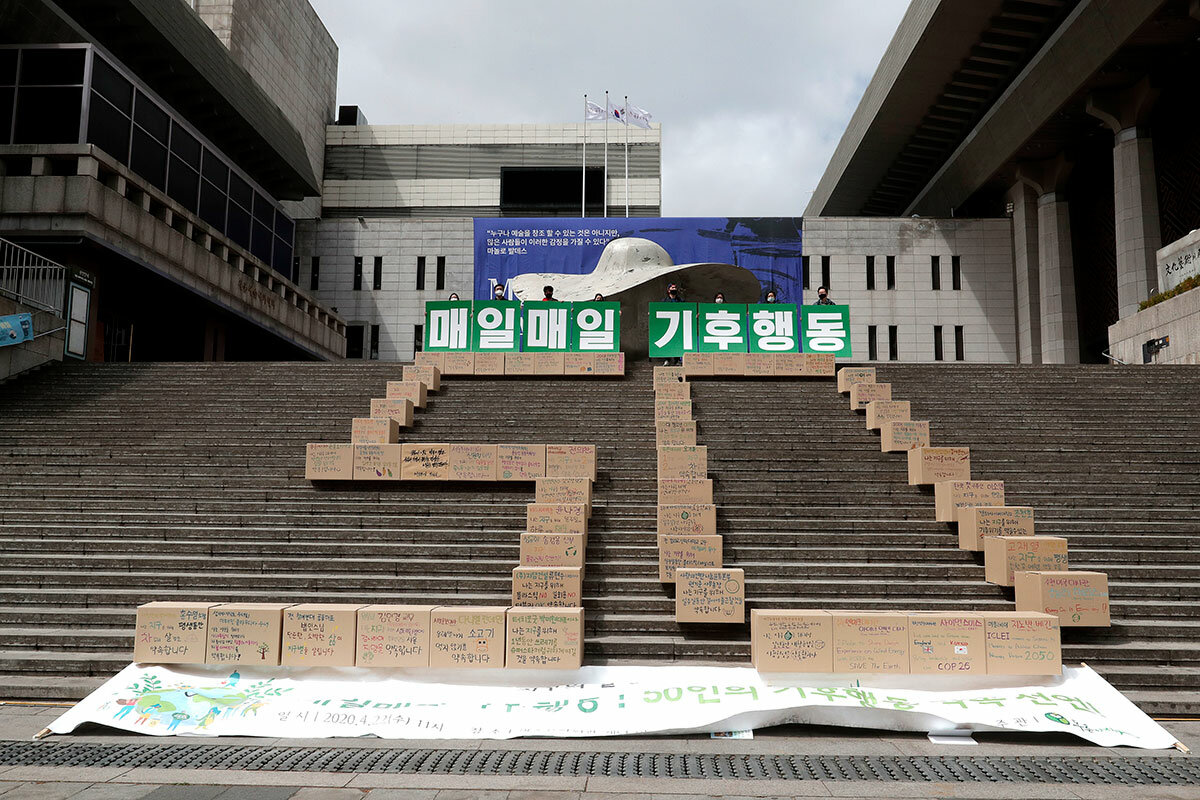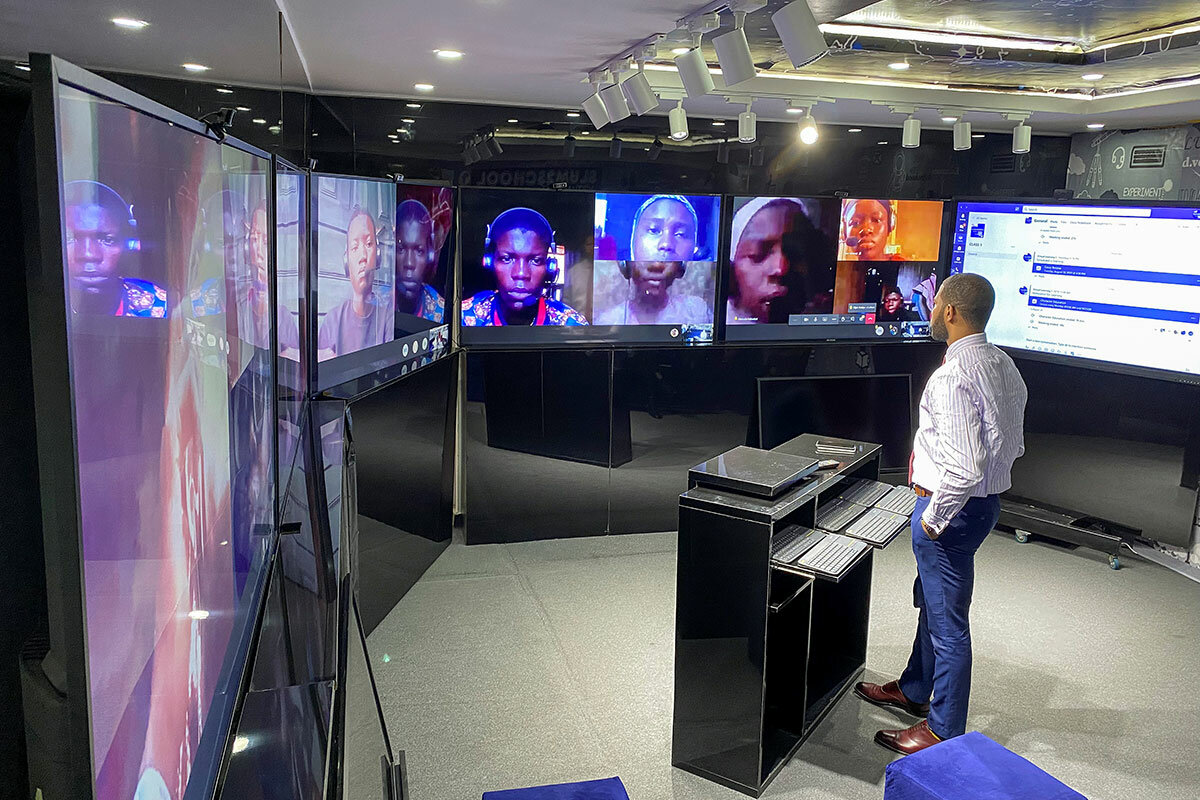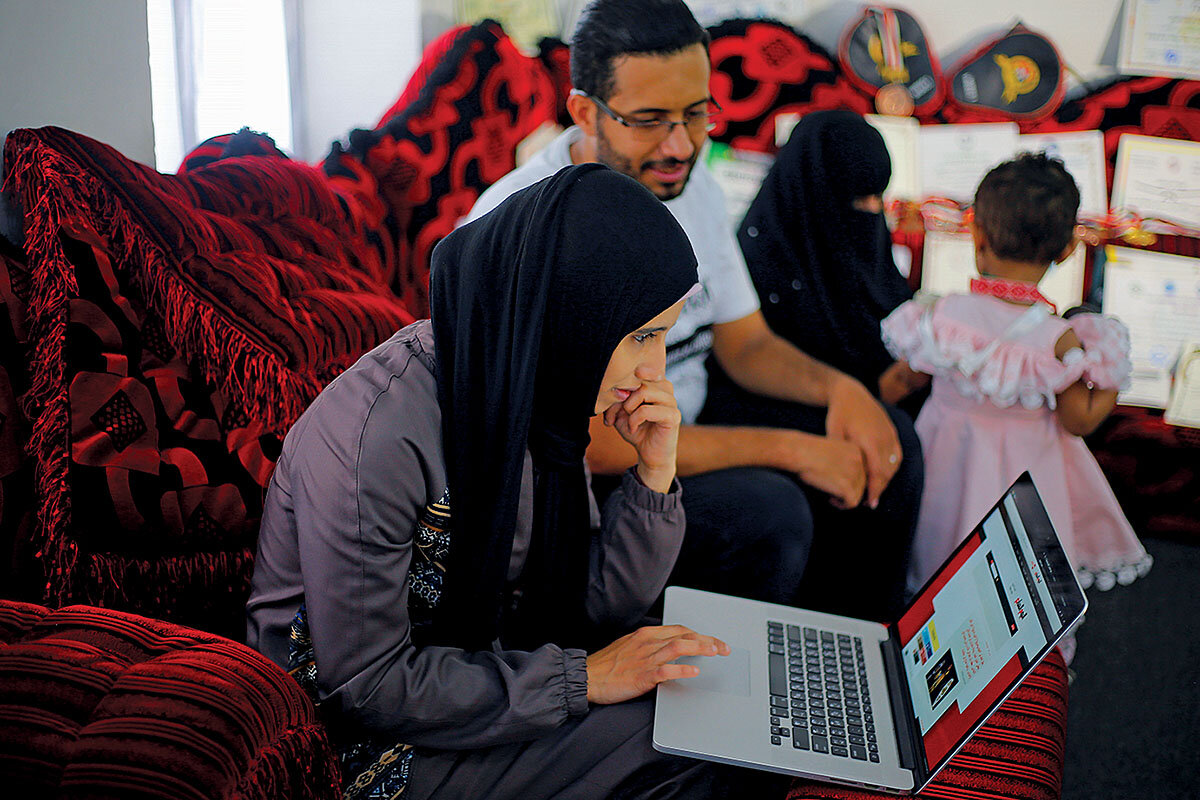Seeking silver linings: Points of Progress in a pandemic
Loading...
Green recovery planning
Nature got a break from humans – inspiring hopes for a green recovery. As countries went into lockdown, the internet flooded with images of the natural world taking over, often shared with the meme tagline “the world is healing.” The sharp dip in human-generated pollution and uptick in animal activity helped people imagine what an environmentally friendly, post-pandemic world might look like. While any kind of green recovery will take sustained political effort, not just a few interesting snapshots, some countries are emerging from the crisis with new, science-backed goals.
South Korea and the European Union were early to announce their versions of a “Green New Deal” – economic recovery plans that support a move away from fossil fuel dependency – although South Korea has also been criticized for continuing to bail out coal companies. Experts say the stimulus plans of some EU countries, including Germany, France, and Spain, are especially strong and will have a net-positive environmental impact. Canada has also made climate recovery a central part of its economic crisis response, making some government loans contingent on companies disclosing climate risks and committing to better practices. “It’s a wake-up call that as governments invest in the economic recovery, they need to be thinking about the level of systemic change that we’re aiming for,” said University of British Columbia politics professor Kathryn Harrison. (Climate XChange, World Resources Institute, Thomson Reuters Foundation)
Why We Wrote This
This special installment of Points of Progress highlights moments from this past year of pandemic where people turned adversity into an advantage.
Addressing unequal tech
More cities are tackling digital inequality, as lockdowns expose technology divides. With schooling, health care, and other public services largely moved online, local authorities are stepping up to confront long-standing barriers to internet access around the world.
In July, we highlighted that the city of Lagos, Nigeria, was distributing cellphones preloaded with data and an educational app to thousands of children. “It’s quite clear we are not going to go back to how things were,” said the city’s commissioner for education, Folasade Adefisayo, during the rollout. “We’ve found e-learning to be efficient and interesting ... and so far we see it as being a part of how they can learn going forward.” More recently, nearly 90% of Chicago voters backed a referendum to guarantee all “community areas” have internet access, and in London, Mayor Sadiq Khan and the local government association have established a task force and allocated $2.05 million to improve digital equality over the next two years. (Thomson Reuters Foundation, The Guardian, MyITU)
Women break barriers
In some places, the pandemic has allowed women to enter the workforce in new roles. Business partners Gillian Kobusingye and Sharon Rutega saw an opportunity to improve Uganda’s transit options and ease pandemic hardships, especially among women, by launching Diva Taxi, an all-female ride-hailing service. Drivers get 85% of the proceeds from each trip and self-defense training, and the entrepreneurs are planning to open an all-female mechanic shop next. In the Middle East, women are using the accelerated digital revolution as an entryway into the workforce.
Experts say there is tremendous opportunity for women to help meet increasing demand for technology services, especially in conservative regions, where female customers may only be comfortable asking another woman to repair a computer or phone containing personal files. A McKinsey study found that, although women are expected to be hit the hardest by the pandemic, this so-called fourth industrial revolution could ultimately double their job opportunities over the next 10 years. (Daily Monitor, Thomson Reuters Foundation)
Remote working opens doors
The shift to remote working has opened up professional opportunities for many people with disabilities, in what advocates expect will be a lasting change. For years, disabled communities in various countries have been lobbying for more remote working options, but were often met with reluctance or outright opposition. Meanwhile, researchers have argued that such flexibility improves productivity and employee satisfaction.
Kayle Hill, who is diagnosed with multiple chronic conditions including arthritis, says she can do her job better from home, where she doesn’t need to sit upright for long periods. Her former employer was resistant to remote work accommodations, but she now works as a community outreach associate for a social services organization. “For the longest time, ableism has told me that I can’t hold a job,” she told the Monitor’s Jingnan Peng. “And if I can’t do that, then I’m not ‘good.’ But when COVID happened, everybody started adjusting to remote work, and my prospects opened up.” (Christian Science Monitor, Raconteur)
Charities see boost
People seem to have become more charitable. When the pandemic brought the world to a standstill in early 2020, many were eager to help. Interest in volunteering spiked in March and April, according to the International Labor Organization. On May 5, 2020, people in more than 145 countries mobilized for #GivingTuesdayNow, creating a surge in charitable donations on that day. The generosity was widespread, the Women’s Philanthropy Institute found, with 56% of U.S. households giving to charity or volunteering early in the pandemic, despite mounting economic hardships.
When the annual GivingTuesday occurred on Dec. 1, the upward trend continued: By most estimates, giving jumped by about 25% compared with the previous year, with charities raising nearly $2.5 billion on that one day. Over the whole year, an analysis of 17 organizations by M & R Strategic Services found that although average gift sizes generally declined, the groups raised a total of $52 million, more than a third more than their 2019 revenue. (GivingTuesday, M+R, International Labour Organization, The Conversation, The Associated Press)
Trust in science up
Trust in science has grown since the start of the pandemic. The annual 3M State of Science Index found the highest rates of trust in science since the group began tracking such data three years ago. Last year, 89% of 1,000 study participants from 11 countries say they trust science and more than 54% agree that COVID-19 has made them more likely to stand up for science, compared with 20% who said they’d advocate for science in pre-pandemic surveys. “As people face the most challenging health crisis in our lifetime, science is more relevant, more trusted, and more important to people all over the world,” said Mike Roman, CEO of 3M.
Surveys conducted in Australia and New Zealand, where management of the pandemic has been relatively effective, in July found high confidence in public health scientists. Around 80% of the respondents also said the government was generally trustworthy, compared with around 50% expressing that level of confidence in 2009. The most recent German science barometer survey saw levels of trust in scientific research hovering between 60% and 73% during most of 2020, up from 46% in 2019. (3M, Minneapolis / St. Paul Business Journal, Nature, Australian Journal of Public Administration)









